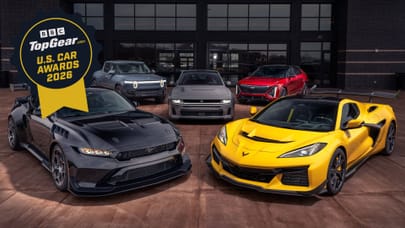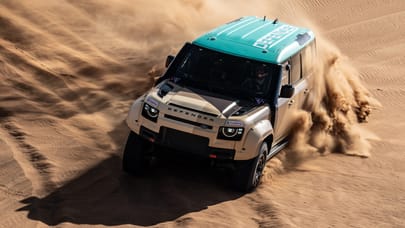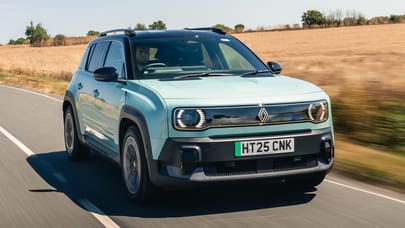
Huracan gets 1,000 new orders
It's been a week since Lamborghini paraded its new baby - the Huracán LP610-4 - to the public at the Geneva Motor Show. But since Son of Gallardo first hit the internet two months ago, the phones at Lambos Sant'Agata Bolognese factory have been ringing non stop with people desperate to have the 602bhp V10 supercar on their drive.
"We've had more than a thousand Huracán orders in two months," sharp-suited Lambo CEO and President Stephan Winklemann revealed to Top Gear. "This is more than expected and very positive. Given the experience that we've had going from Murcielago to Aventador, selling at twice the pace of the Murcielago [1,001 of the £260,000 supercars were sold last year], I think that we can do more with the Huracan than we did with the Gallardo."
The Gallardo wasn't a small-scale thing either. It was the car that transformed Lamborghini from knocking out 250 cars a year to around 2,000 cars annually. In total, just over 14,000 Gallardos were made in its 10-year production run. And Since Audi acquired Lamborghini in September 1998, Lambo's chief admits that it's helped grow the Italian supercar manufacturer.
"We've been using Audi's expertise in aluminum, electronics, process orientation and quality," Winkelmann says. "These are very expensive to develop in small units but they're based on bigger-sized companies, so we get the benefit which is very good for Lamborghini."
But it's a two-way relationship. Audi is currently looking at Lambo's carbon fibre nous and the new R8 due next year will share some common parts with the Huracán. However Lambo's CEO and President is under no illusion that they'll be able to stretch the Huracan's lifecycle as long as its predecessor.
"I don't think the Huracan will last as long as the Gallardo," Winkelmann admits. "With the knowledge of how things are now evolving [in the industry] it's not going to last ten years - it's impossible. The Gallardo was the first car for decades in its segment, so we had to establish trust, evaluate and test things with that car. But to repeat it would be a miracle."
Later Stephan claimed, "there's plenty in the pipeline to keep the car evolving." We wouldn't be surprised if the car followed the same path as the Gallardo with roadsters and lightweight editions coming in the future. But with supercars now making use of hybrid powertrains and energy recovery systems, this leaves Lamborghini as one of the last bastions fighting the battle against forced-induction to stick with big, naturally aspirated V10s and V12s.
"You always need to have a technical innovation within cars but naturally aspirated engines for Lamborghini are the history and DNA of the brand. They're good in terms of torque at low revs, they have a sound that's unmistakable and lots of power. There are areas still to improve and we'll have to see how long it is before legislators make regulations against this type of engine."
Selling all these supercars left Lamborghini sitting on an annual revenue of £424 million last year. It claims that 20 percent of that turnover back was ploughed back into R&D for new models. But when will we see that ever-elusive third model in the line-up?
"We are working a lot on a third model." Winkelmann says with a smile. "But we've stopped talking about it because we have so much work to do."
As they've got so much work to do, why don't you give them a hand in the comments below and tell them what you'd expect from Lambo's third model.
Top Gear
Newsletter
Thank you for subscribing to our newsletter. Look out for your regular round-up of news, reviews and offers in your inbox.
Get all the latest news, reviews and exclusives, direct to your inbox.
More from Top Gear
Trending this week
- Car Review
BMW 1 Series








